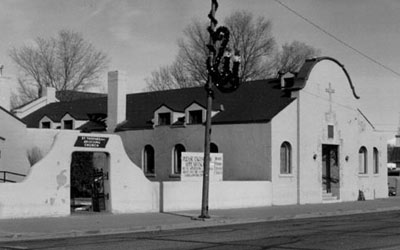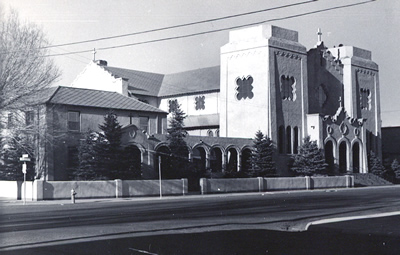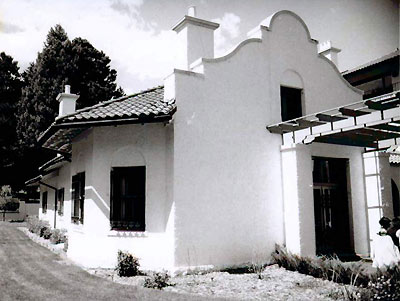Mission
The numerous Spanish missions constructed throughout California between 1769 and 1823 provided the inspiration for a new architectural style that emerged at the end of the 19th century.
The "California Building", designed in 1893 for the World’s Colombian Exposition in Chicago, popularized the Mission style. By 1900 the Mission style rapidly spread eastward from California. The Santa Fe and Southern Pacific railroads adopted the style for their depots and hotels, fueling its popularity across the region.
While a few early examples appeared in the 1890s, most Mission buildings in Colorado were constructed between 1900 and 1930. This style was so popular that many structures constructed much earlier were remodeled with Mission elements.
The Mission style is easily recognized by the curvilinear-shaped gable wall or the low parapet wall rising above the roofline. The style is characterized by smooth stuccoed or plastered wall devoid of ornamentation. The roof is usually tile, and semicircular arched openings form windows, entries and arcades. A small round window or ornament may appear in the center of the gable. Roofs may have overhanging eaves with exposed rafters. Towers and iron balconies are found on larger buildings.
The Mission style has very little decorative detailing, in contrast to the more ornate Spanish Colonial Revival style. Generally, the only surface ornamentation on a Mission building is a plain string course that outlines windows or arches. The curvilinear-shaped roofline distinguishes the Mission from the similar Mediterranean style.
Common elements:
- curvilinear-shaped gable
- round arched windows and entries
- tile roof
- arcades
- stucco or plaster finish
- string course



